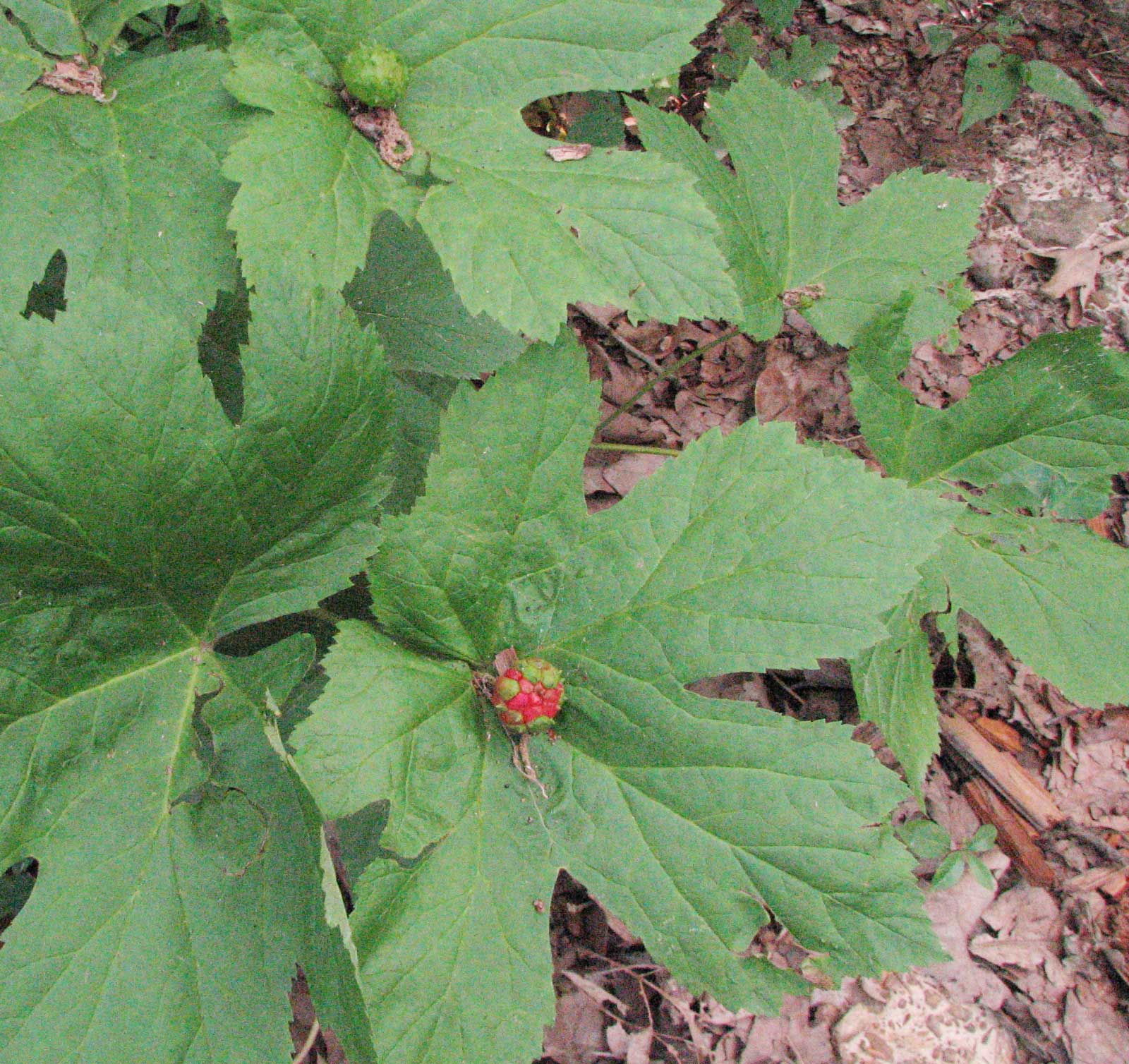Herbal Remedies
Contact
University of Arkansas System Division of Agriculture
Cooperative Extension Service
2301 S. University Ave.
Little Rock, AR 72204

Herbal Remedies

Bouncing along a two-track forest trail in Newton County last week I spotted an unfamiliar wildflower out of the corner of my eye. My friend stopped and we went to investigate. It was a big patch of goldenseal, one of the herbs that has had a long history in herbal medicine. Driving along we soon saw large stands of black cohosh, mayapple and a sprinkling of bloodroot. All of these have been, and still are, a part of the herbal medicine scene.
I’ve often marveled at how difficult it is to eke out a living for both man and beast in the woodlands of the Ozarks. History informs us that up until the 1930s most of the deep-woods Ozark Mountain farms were operated by subsistence farmers who grew or hunted for much of what they ate. A little cash income was earned by selling hogs (later chickens and cattle), timber or even making moonshine from their small patches of corn. Some also gathered and sold herbs collected from the wild.
Ginseng is a valuable native herbal remedy in Arkansas
Of the medicinal plants native to Arkansas, ginseng is by far the most valuable but the hardest to find because it has been collected for over 200 years. In 1985 Arkansas passed regulations establishing a harvesting season and required those digging the herb to have permits. A decade ago, state yields of between 1,000 and 2,000 pounds of dry roots were the norm but yields have fallen to about half that so the number of harvesting permits has been reduced to about 125. But a little “sang” is valuable with dry roots typically fetching from $500 to $800 per pound.
Goldenseal as an herbal remedy
Goldenseal is said to be the sixth most-often used plant in herbal medicine. It is native throughout most of the eastern woodlands and grows in shaded, moist woodlands in similar sites where ginseng is found. Goldenseal, because of a compound called berberine, is thought to have natural antibiotic properties. The harvest of goldenseal is not regulated in Arkansas. Roots are dug in the fall and sold to the half dozen or so herbal buyers that operate in the Ozarks. Currently it goes for $60 to $80 per pound of dried root, or about one-tenth of what ginseng sells for.
The history of herbal remedies
“I’m from the government, and I’m here to help.” I’ve used that line a few times in talks to get a good laugh from skeptics who see government regulations as a hindrance, not a help. But back at the close of the 19th century, food and drug regulations were almost nonexistent. One company infamously added cocaine to their soft drinks so you would want more of it while others made outrageous claims about the efficacy of patent medicines they sold. In 1906 Congress passed the Pure Food and Drug Act which curbed some of the excesses of runaway capitalism. With drugs, it came to pass that they had to be both safe and effective.
In early years of the 20th century in America, herbal remedies fell into the background as modern medicine began pumping out miracle cures and selling them to us in little bottles. Old-fashioned remedies such as calamine lotion or the cod liver oil my mother forced down our gullet when we had an upset stomach were mostly ignored unless there was a question about safety. This sometimes happened as when, in the 1960s, sassafras tea was banned because it was shown to cause cancer in lab mice.
Regulating remedies
Things bounced along in this quasi-regulated state until the 1980s when a convergence of events took place that led to the passage of the Dietary Supplement Health and Education Act of 1994. Many people who came of age in the 1960s just didn’t trust the government anymore, and groups such as the back-to-the-landers had embraced organic foods, herbal medicine and a less consumptive lifestyle. In the late 1980s Congress considered adding to the power of the Food and Drug Administration by requiring that herbal medicines not only be safe but that they actually prove that they cured the ills they claimed. The health food industry cried foul and blocked early attempts at requiring detailed labeling.
Orrin Hatch of Utah and Tom Harkin of Iowa authored the 1994 bill that was signed into law by President Bill Clinton. The bill lumped together a host of organic and medicinal products and grandfathered them in as “dietary supplements.” Within a year, Arkansas’ favorite big-box retailer had added a host of these dietary supplements to their shelves and mainstream Americans began trying them out to see what helped various ailments and what didn’t.
I’m being kinda’ petty here but it takes quite a bit of corn actually to make moonshine, like one bushel per gallon is what estimate I heard. I would consider just taking the word “small” out of this. That word is relative. A small patch to me is not a small patch to a real farmer.